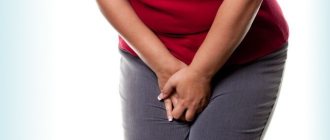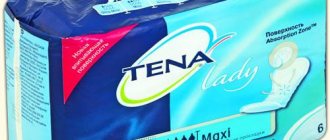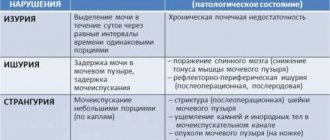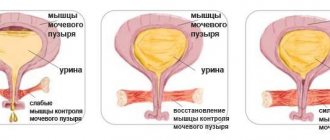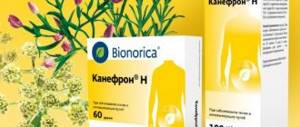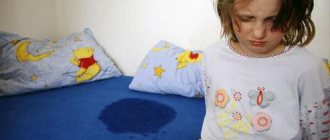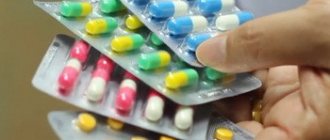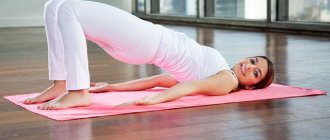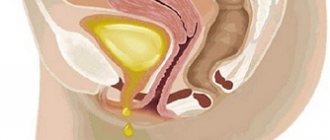More than half of women experience the problem of urinary incontinence at least once. Sometimes it occurs in young girls after childbirth, sometimes it causes inconvenience to older people, and for some it accompanies for a long time.
Fear of losing urine can lead to psychological and sexual disorders, cause depression and hinder personal and career growth. Incontinence (another name for incontinence) always reduces the quality of life and therefore requires special attention.
There is even a special international organization for urinary continence that conducts research and develops all kinds of treatment methods. Experts call urinary incontinence any involuntary release of urine. But depending on the conditions, time of day, and circumstances of incontinence, several types of incontinence are distinguished.
Stress urinary incontinence
This type of incontinence accounts for half of all cases of uncontrolled urination. The main cause of this condition is the improper functioning of a special muscle - the urethral sphincter. The weakening of this muscle, together with a periodic increase in intra-abdominal pressure, leads to leakage of urine or even complete emptying of the bladder.
Symptoms of stress urinary incontinence
leakage of urine in varying quantities during physical activity, laughing, coughing, sexual intercourse, straining, absence of an irresistible urge to urinate, sometimes - combination with incontinence of gases and feces
There are many reasons why stress urinary incontinence can occur.
Pregnancy
Almost all women in an interesting position experience discomfort due to the leakage of a small amount of urine. They are forced to plan their walks based on the location of the toilets. Moreover, in the first weeks of pregnancy and shortly before childbirth, the symptoms of incontinence become more pronounced. This is due to altered hormonal levels and pressure from the uterus on the pelvic organs.
Childbirth
Especially often, incontinence occurs after spontaneous childbirth with a large fetus with a perineal incision and other manipulations. As a result, the muscles and ligaments of the pelvic floor are damaged, intra-abdominal pressure is distributed unevenly and the sphincter ceases to perform its function. It is after ruptures or inaccurate incisions of the perineum (episiotomy) that gas and fecal incontinence joins urinary incontinence.
Surgeries on the pelvic organs
Any interventions related to the uterus, bladder, or rectum cause adhesions and changes in pressure in the pelvis. In addition, operations are sometimes complicated by fistulas between organs, which also leads to urinary incontinence.
Age-related changes
With age, the elasticity of the ligaments and muscle tone decrease, which inevitably leads to sphincter dysfunction. After the onset of menopause, the body experiences a deficiency of estrogen, which is the cause of urinary incontinence in older women.
In addition to these main reasons, there are risk factors. They may be a background to the development of urinary incontinence, but their presence will not necessarily lead to this disease.
Risk factors
Caucasian race heredity (if there is a disease in close relatives or cases of enuresis in childhood, the risk of incontinence is greater) obesity (especially in combination with diabetes mellitus) neurological diseases (stroke, heart attack, parkinsonism, spinal injuries) urinary tract infection digestive disorders taking certain medications anemia
Stress urinary incontinence causes a lot of trouble for women. Refusal to play sports, fear of leaking urine in public, constant nervous tension have a negative impact on health. Therefore, it is important not to be embarrassed or hush up this topic, but to consult a doctor in a timely manner.
What drink?
Only the attending physician can answer this question. The fact is that for different types of disease, the range of drugs used may not coincide at all. Self-medication for incontinence is dangerous and can lead to worsening of the condition. And some medications simply will not be given to the patient at the pharmacy without a prescription.
Types of medications used to treat incontinence:
- Antidepressants,
- Nootropics,
- Sedatives,
- Antispasmodics,
- M-anticholinergics,
- Estrogens,
- Adrenomimetics,
- Vasopressin analogues.
| Main forms of the disease | Signs | Common Causes |
| Urgentnaya | frequent urge to urinate, bladder fills quickly | bladder muscle spasm |
| Stressful | Urine is released as a result of physical activity, walking, coughing | weakening of the bladder neck, urethral sphincter |
| Enuresis | Urine is released involuntarily | dysfunction of the autonomic nervous system |
Mixed incontinence is also often observed, in which signs of urgent and stress forms are observed.
Most often, medications are effective for urgent and mixed forms of incontinence, enuresis, and less often for stress.
M-anticholinergics
Substances of this type act on the M-cholinergic receptors of the bladder. Anticholinergics help reduce tone and relax the muscles of the bladder, increasing its available volume. Effective for urgent forms of incontinence. Taking anticholinergic drugs reduces the frequency and severity of the urge to urinate. The bladder becomes less likely to overflow, and therefore the frequency of urges decreases.
Popular anticholinergic drugs based on tolterodine: Detrusitol, Urotol, Uroflex, Roliten. The course of treatment with medications of this series is at least a month. The drugs Vesicare and Enablex use other substances - solifenacin, darifenacin. The effect of these drugs can be noticeable after just a week. Contraindications for anticholinergic drugs are pregnancy, narrowing of the ureters, and stones in the bladder.
Antispasmodics
Antispasmodics have a similar scope of application to anticholinergics. They fight bladder muscle spasms and increased excitability. Reduce urinary instability and the number of urges. Indicated for mixed and urgent forms of incontinence. From this group of drugs we can note Spazmex (trospium chloride), Betmiga (mirabegron). Also popular are drugs based on oxybutynin (Driptan).
Antidepressants, nootropics and sedatives
The mechanism of urination is regulated by the brain and spinal cord. Therefore, neurological and mental disorders can disrupt this mechanism. Some antidepressants, sedatives and nootropics can help with incontinence of a neurogenic and psychogenic nature.
Very often, among antidepressants for incontinence, doctors prescribe Imipramine, Duloxetine, Melipramine. Nootropics, such as Pantocalcin, Pantogam, Phenibut, Picamilon, have an auxiliary effect, strengthening the nervous system. Sedatives and tranquilizers relieve nervous tension and normalize sleep.
Antidepressants should not be taken if you have hypertension, pregnancy, liver disease, or glaucoma. Also, antidepressants often cause side effects, such as seizures, and can negatively affect the condition of the heart, liver, and blood.
Hormonal drugs
The doctor may prescribe analogues of female hormones if incontinence is caused, among other reasons, by a lack of these hormones in the body. This is due to age-related changes in women during menopause. Lack of estrogen leads to weakness of the pelvic muscles, which support the urethra and bladder neck in the desired position.
When treating incontinence (most often stress-type incontinence), estriol-based drugs are used, such as Ovestin, Microfollin, Presomen. They can be used both in the form of tablets and in the form of vaginal suppositories. Many urologists, however, question the effectiveness of hormones for incontinence in women.
Adrenergic agonists
This group of drugs are synthetic analogues of adrenaline and act on the alpha-adrenergic receptors of the bladder neck, helping to increase its tone. Adrenergic agonists are prescribed for stress incontinence. However, the effect of use is not always observed. Popular drugs in this group are midodrine (Gudron), ephedrine.
Vasopressin analogues
Vasopressin is a hormone that determines the amount of urine produced in the body. Increased levels of vasopressin in the blood cause less urine to be produced. This property of vasopressin is used in drugs containing a vasopressin analogue (desmopressin). Desmopressin is commonly used to treat frequent nighttime urges and nocturnal enuresis.
Urge incontinence
Normally, the urge to urinate appears after a certain amount of urine accumulates in the bladder. Feeling this urge, a woman can successfully restrain it to the nearest toilet. With increased reactivity of the bladder, even a small amount of urine is enough to cause a strong, unbearable urge. And if, by luck, there is no toilet nearby, then there is a risk of losing urine.
The cause of this disease is considered to be an overactive bladder. Due to the special mobility of the psyche and the speed of nerve impulses, the muscles of the sphincter and bladder react to the slightest irritation. Therefore, urine can be missed if there is a small accumulation of it in the bladder, especially if there is any external irritant (bright light, the sound of pouring water, etc.)
Main symptoms of urge incontinence
frequent urge to urinate; the urge is almost always sudden; an uncontrollable desire to urinate; the urge is often provoked by external circumstances
The risk factors for urgency are the same as for stress incontinence because the two types are often combined.
Differential diagnosis of urinary incontinence
| Cases of urinary incontinence after an irresistible urge | Almost never | Often |
| Urinary incontinence during exercise | Often | Rarely |
| Frequent urination (more than 8-10 times a day) | Rarely | Often |
| Urinary incontinence during intercourse | Often | Often |
| Nocturnal urine output | Rarely | Often |
| Increased symptoms after drinking alcohol or spicy food | Rarely | Often, when combined with inflammatory diseases |
Features of the disease
Why does urinary incontinence occur in women? Prolapse and removal of the uterus, physical activity, and cystitis cause urination problems in women. Uterine prolapse and cystitis occur not only in old age. During complicated childbirth and pregnancy, prolapse may also occur. Uterine prolapse is possible due to a genetic predisposition, after surgical operations. Currently, it is possible to eliminate the causes of pathologies with the help of medications and exercise therapy. Gymnastics will allow you to control the process of urination. Women will no longer need diapers.
Male urinary incontinence, especially during sleep, can develop in the presence of prostate adenoma, after prostatectomy and resection of the prostate, cystitis, and in the presence of cancer of the urinary system. Surgeries and medications will also help eliminate pain and the causes of the disease. The appearance of adenoma is associated with age. Older men are more likely to develop cystitis. Treatment is based on medication. There are also special diapers for the comfort of men. To avoid complications, timely treatment of adenoma and removal of other male factors of the disease is necessary.
Urinary incontinence examination
Detailed story to the doctor about your complaints
Factors that provoke incontinence, the time of onset of symptoms, their severity, and additional complaints are important. In addition, you need to ask your mother, grandmother, and sisters about similar symptoms in order to identify a hereditary predisposition. Be sure to note if there were cases of chronic nocturnal enuresis in childhood.
You can fill out a questionnaire designed specifically for people with incontinence problems. Incontinence Symptom Questionnaire (ISQ): 1. How long have you been experiencing symptoms of incontinence? 2. Has the volume of urine lost changed since the onset of the disease? 3. How has the incidence of urinary incontinence changed since its inception? 4. Indicate how often the following actions result in incontinence (never, sometimes, often).
physical exercise, including running, sports sneezing coughing laughing lifting weights changing body position: moving from a sitting to an upright position the sight or sound of running water psycho-emotional stress hypothermia
5. Do you have an irresistible urge to urinate? 6. How long can you hold urine when you feel the urge? 7. How often do you lose urine? 8. When does urinary incontinence occur most often? 9. Do you feel your underwear getting wet without the urge to urinate? 10. Do you wake up at night to urinate? 11. Please indicate how much urine you usually lose. 12. On a 5-point scale, rate the degree of influence of urinary incontinence on your daily life: _____ (0 - does not affect, 5 - significantly affects).
Keeping a urine diary
Detailed records of urination and urinary incontinence will help your doctor make the correct diagnosis and prescribe treatment.
| Time | What liquid did you take and in what quantity? (water, coffee, juice, beer, etc.) | How many times did you urinate in one hour? | How much urine? (a little, medium, a lot) or indicate in ml | Have you experienced an unbearable urge to urinate? | Have you ever had an episode of involuntary leakage of urine? | How much urine was passed during this episode? (a little, medium, a lot) or indicate in ml | What were you doing during the involuntary leakage of urine? |
| 7:00 -8:00 | Tea, 200ml | 1 | A little | — | — | — | — |
| 8:00 -9:00 | — | 1 | A little | Yes | Yes | A little | I went for a morning jog |
| 9:00 –10:00 | |||||||
| 10:00 -11:00 |
And so on, all 24 hours.
PAD test
Often the concepts of “a lot” and “a little” differ from woman to woman, so it is difficult to assess the extent of the disease. This is where the pad test, or PAD test, comes to the aid of doctors. This method is used to obtain objective data on the amount of urine lost.
For the study, the woman must wear urological pads, weighing them before and after use. The duration of the test can vary from 20 minutes to two days, more often – about 2 hours. When performing a short test, it is recommended to drink half a liter of still water.
Vaginal examination
Examination of the genital organs using gynecological speculum is necessary to exclude other diseases. During the examination, the doctor may find:
atrophy of the vaginal mucosa. After menopause, genital dryness associated with estrogen deficiency may worsen urinary incontinence prolapse or prolapse of the pelvic organs (see symptoms of uterine prolapse) large fistulas
During examination, a cough test is performed: when coughing, you may notice the release of urine from the urethra.
Analysis of urine
Very often, with inflammatory changes in the organs of the genitourinary system, incontinence of small portions of urine occurs. Therefore, the detection of leukocytes, red blood cells or bacteria in the urine gives rise to examination for infections. To get an accurate result, you need to know the basic rules for collecting urine:
use the first, “morning” urine, collect the middle portion of urine, thoroughly clean the vagina before urinating, cover the vagina with a clean cloth during collection
Imaging (ultrasound, MRI) Urodynamic studies (can help determine the type of incontinence)
Hormonal drugs
Medicines containing hormones are prescribed to patients who have urinary incontinence as a result of disorders in the endocrine system. Treatment is aimed at increasing the amount of estrogen in the body. The main drugs in this group include: Gutron, Cymbalta, Ubredit.
In addition to replenishing the deficiency of female hormones, hormonal medications have a negative effect on the body. In many cases, after a course of treatment, a girl is diagnosed with the presence of a benign or malignant tumor.
As a rule, the duration of therapy is 2 months. With pronounced symptoms, the course may increase. If a positive effect was not achieved with hormonal therapy, the woman is offered surgery.
Treatment of urinary incontinence
Depending on the cause of urinary incontinence in women, treatment is carried out by gynecologists, urologists in a clinic, or surgeons in a hospital.
general treatment methods treatment of stress incontinence treatment of urge incontinence
Treatment of any type of urinary incontinence should begin with the simplest and most accessible methods. These methods include lifestyle modification and special exercises. This is a lifestyle change:
| Weight control for obesity | a necessary step in the treatment of all types of urinary incontinence. Extra pounds constantly increase intra-abdominal pressure, disrupt the normal arrangement of organs, causing urination problems. Depending on the degree of obesity, psychological, medicinal or surgical treatment is used. |
| Reducing consumption of coffee, tea and other caffeinated drinks | Caffeine-containing drinks provoke increased urination, so the risk of losing urine increases significantly. But excessive restriction of fluid intake is also undesirable: this will not reduce incontinence, but will have a negative effect on overall well-being. |
| To give up smoking | A huge number of studies have been conducted to identify a direct connection between smoking and incontinence, but the topic still remains unexplored. We can only say with certainty that chronic nicotine bronchitis with stress urinary incontinence is a huge problem, since with every coughing movement a woman loses urine. This point also includes the treatment of chronic respiratory diseases. |
| Establishing a urination routine | This method gives very good results for urge incontinence. Its essence is to visit the toilet at strictly defined hours, regardless of the strength of the urge. At first, the intervals between urinations do not exceed 30-60 minutes, but over time you can develop a more convenient regime. |
| Pelvic floor muscle training | The main goal of such training is to tone the muscles, restore sphincter function and regulate the phases of filling and urination. With the help of special exercises and devices, a woman can completely take control of the sphincter muscles, eliminating the sudden loss of urine. |
| Treatment of chronic respiratory diseases Psychological orientation to distract from the desire to urinate | |
Kegel exercises
The essence of such gymnastics is as simple as possible. First you need to “find” the necessary pelvic floor muscles: perivaginal and periurethral. To do this, you need to sit while imagining the urge to urinate and try to hold back this imaginary stream of urine. The muscles involved in this process need to be trained regularly.
Contract and relax them three times a day, gradually increasing the time of contraction from a few seconds to 2-3 minutes. This process will be invisible to others, so you can practice not only at home, but also at work, while driving in a traffic jam and in any free time.
After establishing control over the muscles at rest, you can complicate the task: try to contract them when coughing, sneezing and other provoking factors. You can diversify the manipulations with the muscles to achieve a better effect.
slow contractions, rapid contractions of expulsion (similar to the pushing period of labor), retention of the stream during actual urination
Biofeedback training
The main disadvantage of simple Kegel exercises is the inability to control their implementation. Sometimes women, along with the necessary muscles, also tense others, increasing intra-abdominal pressure. Not only does this ruin your entire workout, but it can also make the problem worse.
A set of exercises with biofeedback (BFB) includes a special apparatus for recording muscle tone. With its help, you can monitor the correct execution of contractions, and, if necessary, perform electrical stimulation. Biofeedback training has been proven to improve muscle tone and urinary control.
Contraindications to biofeedback training:
malignant neoplasms inflammatory diseases in the acute phase severe diseases of the heart, kidneys, liver
Use of special simulators
For training, many compact devices have been created that allow you to strengthen the pelvic floor muscles with maximum efficiency and perform all the necessary exercises for urinary incontinence in women.
One of these simulators is the PelvicToner. This device, based on the properties of a spring, allows you to gradually and correctly increase the load on the intimate muscles, strengthening them. It is easy to use and care, and its effect is confirmed by clinical trials.
Psychological training
If you have a strong urge to urinate, you can try to distract yourself from the thought of it. Everyone has their own ways: think about plans for the day, read an interesting book, take a nap. The main task is to make the brain forget about going to the toilet, at least for a short period.
Treatment of the disease at home
Treating incontinence at home is also possible. For men, the absence of adenoma is especially important. Home remedies help remove the causes of the disease. The pain when going to the toilet subsides. Infusions of various herbs help cure urinary problems and relieve pain. The required amount is calculated drop by drop. Cough that causes incontinence can also be relieved with herbs. An effective recovery method is gymnastics. Exercise therapy allows you to train the pelvic muscles and gain control over the urge to go to the toilet. The pain practically never returns. Gymnastics has no contraindications. The exercise therapy complex is designed for people of any age. You should do exercises regularly.
Treatment of stress incontinence
In addition to the general incontinence treatments described above, treatment for stress incontinence requires the intervention of a physician. Conservative treatment with medications is not very popular, as it helps only in a small number of cases.
Drug treatment:
For mild stress incontinence, when the anatomical structures have retained their integrity, the following is sometimes used:
Adrenergic agonists (Gutron) increase the tone of the sphincter and urethra, but also affect vascular tone. They are used extremely rarely due to low effectiveness and side effects (increased blood pressure). Anticholinesterase drugs (Ubretide) also increase muscle tone. Recommended for women whose examination results have revealed bladder hypotension. The antidepressant Duloxetine (Cymbalta), effective in half of the cases, but has side effects on the digestive system.
Treatment of stress incontinence with tablets is very rare due to frequent relapses and side effects.
"Detrusitol"
Instructions for use, price and reviews are of interest to many patients with incontinence. This medication belongs to the group of competitive blockers of M-cholinergic receptors. It reduces the tone of smooth muscles of the urinary tract.
The active substance of this drug is tolterodine, a competitive antagonist of muscarinic cholinergic receptors, which exhibits the greatest selectivity for the nerve endings of the bladder. In addition, the 5-hydroxymethyl derivative of the main component also has high specificity for muscarinic receptors and does not have a significant effect on other receptors. Treatment with tolterodine reduces detrusor contractility. Use of the drug in high doses can lead to an increase in the amount of residual urine and cause incomplete emptying of the bladder. According to reviews, the greatest effect of therapy is observed after 4 weeks from the start of treatment.
This medicine should be taken orally, without reference to meals. The daily dosage of the medication is 4 mg. The drug is produced in extended-release capsules and tablets. Depending on tolerance, the daily dose can be reduced to 2 mg. This is confirmed by the instructions for use of Detrusitol.
According to reviews, the price of this drug is quite reasonable. True, it is currently impossible to buy the medicine, since it is temporarily out of production, so the cost of the drug is currently unknown. The pharmacy chain offers analogues of this product: Urotol and Roliten. The first drug can be purchased for 520-670 rubles, the second - for 380-400 rubles.
Surgical treatment
For stress urinary incontinence in women, surgery is the treatment of choice. There are several surgical procedures that vary in complexity. Preference for one operation or another is given depending on the degree of incontinence and the anatomical features of the woman’s urethra.
Contraindications to all types of surgical treatment are:
malignant neoplasms inflammatory diseases of the pelvic organs in the acute phase diabetes mellitus in the decompensation phase diseases of the blood coagulation system
Sling operations (TVT and TVT-O)
These interventions are minimally invasive, last about 30 minutes, and are performed under local anesthesia. The essence of the intervention is extremely simple: insertion of a special synthetic mesh in the form of a loop under the neck of the bladder or urethra.
This loop holds the urethra in a physiological position, preventing urine from leaking out when intra-abdominal pressure increases.
To insert this mesh, one or several small incisions are made in the vagina or inguinal folds; they do not create a cosmetic defect. Over time, the mesh seems to grow into the connective tissue, firmly fixing the urethra.
Recovery after such operations occurs very quickly, the effect is felt almost immediately. Despite the attractiveness of sling operations, the likelihood of relapse still remains. In addition, if there is detrusor instability and anatomical defects of the urethra, this surgical intervention may be unsuccessful.
Despite the difficulties described above, minimally invasive loop surgery is the gold standard in the treatment of stress incontinence.
Injections of volume-forming drugs
During the procedure, under the control of a cystoscope, a special substance is injected into the submucous membrane of the urethra. More often it is a synthetic material that does not cause allergies.
As a result, the missing soft tissues are replaced and the urethra is fixed in the desired position. The procedure is low-traumatic, performed on an outpatient basis under local anesthesia, but also does not exclude relapses.
Laparoscopic colposuspension according to Burch
The operation is performed under general anesthesia, often laparoscopically. The tissues located around the urethra seem to be suspended from the inguinal ligaments. These ligaments are very strong, so the long-term results of the operation are very convincing.
But due to the type of anesthesia and the complexity of the procedure, colposuspension has more contraindications and complications than sling operations. Typically, such an intervention is performed after an unsuccessful loop procedure or in case of violations of the anatomical structure of the genitourinary apparatus.
Colporrhaphy
Suturing of the vagina with special absorbable threads, used for prolapse of the pelvic organs. The operation has a number of complications (tissue scarring, for example) and loses its effect after a few years.
Classification
- Stress urinary incontinence;
- Urgent (imperative);
- Mixed type of disease;
- Iatrogenic incontinence associated with medication;
- Other types of disease (coughing and sneezing cause unconscious urination, continuous and bedwetting during sleep).
False course of the disease is associated with pathologies: exstrophy on the bladder, epispadias, fistulas after injuries, cancer, prostate adenoma, uterine prolapse, cystitis on the bladder, removal of the uterus. In the absence of total defects in the human body, urinary incontinence is considered true.
Treatment of urge incontinence
Unlike stress incontinence, surgical treatment is ineffective for urgency incontinence. All women with this problem are first recommended to try general treatment methods (non-drug). Only if they are ineffective can you think about drug therapy.
Drug treatment
In the treatment of urge urinary incontinence in women, tablets are very effective. There are several classes of medications, the main task of which is to restore normal nervous regulation of urination.
Drugs that reduce the tone of the bladder wall reduce the strength and frequency of its contractions. The most common medications: Driptan, Detrusitol, Spazmex, Vesicare. Drugs that relax the bladder during the filling phase and improve its blood circulation: Dalfaz, Kaldura, Omnic. For incontinence in menopausal women, when there is estrogen deficiency, hormone replacement therapy or special ointments are used. An example of such an ointment is Ovestin, a cream containing an estrogen component. Its use can reduce dryness and itching of mucous membranes, reducing the frequency of urinary incontinence.
Treatment of urinary incontinence in women is a complex task that requires an integrated approach and strict implementation of all specialist recommendations. A few simple rules will help you avoid or delay the manifestations of this disease as much as possible.
Medicine "Urotol"
This medication belongs to the group of competitive blockers of M-cholinergic receptors. It reduces the tone of smooth muscles of the urinary tract.
The active substance of this drug is tolterodine. The drug improves urodynamics. The active substance is a blocker of muscarinic receptors, and acts specifically against the muscles of the bladder. Under the influence of the medication, the average volume of urine decreases, urinary incontinence is eliminated and the frequency of the urge to urinate is reduced. Reviews of Urotol indicate that this drug is well tolerated.
Prevention of urinary incontinence
Maintain the body's water balance. To do this, you need to drink 1.5-2 liters of still water per day. Drinking too much and not drinking enough can be harmful to your health. Try to create your own urination routine. It is quite possible to train yourself to empty your bladder at a certain time. For example, in the morning before getting ready for work, during the lunch break, immediately upon arriving home, visit the toilet and consolidate this habit. Fight excess weight (on your own or with the help of a specialist) Give up bad habits Reduce the consumption of caffeine-containing foods and salty foods Fight constipation, if any. To do this, you can eat foods rich in fiber (vegetables, fruits, especially prunes, figs), drink enough liquid, and drink half a glass of kefir at night. For chronic constipation, you can use herbal laxatives (after consulting a doctor (see laxatives for constipation) Strengthen the pelvic floor muscles before planning pregnancy, which will avoid perineal tears during childbirth Enjoy life and maintain a positive attitude
Reviews
The reviews contain a large amount of information about effective tablets for urinary incontinence in women. Such remedies are also suitable for men, however, this pathology is most often diagnosed in the fair sex, due to anatomical features.
Most of the good reviews were left about the drug "Urotol". Patients note that this medicine quickly eliminates the problem described above, does not contribute to the development of adverse reactions and is well tolerated.
Driptal is also a popular medication, which, according to patients, successfully combats urinary incontinence, increases the time interval between urination and does not have a negative effect on the body.
Regarding the other drugs reviewed, there are both positive and negative reviews, especially for the drug Detrusitol. Many patients are outraged that today this remedy is not on pharmacy shelves, although previously the drug was often prescribed to eliminate urinary incontinence and was considered quite effective.
Urinary incontinence (incontinence) is a problem that can affect any woman. Especially if she is already 50 years old or more. Fortunately, the pathology can be cured with the help of various medications. You just need to know which drug is suitable for a particular form of the disease.
Main conclusions:
Urinary incontinence is a very common problem among women. Without treatment, urinary problems are unlikely to go away on their own. To determine the type of incontinence, you need to undergo an examination, including filling out a questionnaire and keeping a urination diary. Stress incontinence is treated with surgery, and urge incontinence is treated with medication. You can independently prevent incontinence by leading a healthy lifestyle and strengthening your pelvic floor muscles.
Urinary incontinence is a serious problem that requires treatment. It’s better to spend a little time going to the doctor and getting it fixed than to be embarrassed and tormented all your life.
Today, there are quite a lot of drugs that help overcome such an unpleasant problem as urinary incontinence. The most popular among them are:
Driptan. Spasmex. Vesicare. Betmiga. Vitaprost Forte. Detrusitol. Pantogam. Pantocalcin. Urotol. Imipramine.
Only a doctor can say with certainty which medicine should be taken in your particular case. Therefore, be sure to undergo all necessary examinations.
Driptan
A medicine based on the active component oxybutin hydrochloride, which helps reduce the tone of the bladder muscles. It has an antispasmodic effect.
The recommended dose is 5 mg of the drug 2-3 times a day. For the treatment of children and the elderly, you can take 5 mg of the drug only twice a day.
If the patient has been diagnosed with angle-closure glaucoma, intestinal atony, colitis, myasthenia gravis, obstructive uropathy, colon enlargement, bleeding, the use of Driptan tablets is prohibited. Do not use for therapy during lactation and pregnancy.
Taking this medication may cause constipation, nausea, dry mouth, diarrhea, insomnia or drowsiness, headaches, dizziness, weakness throughout the body, mydriasis, increased pressure inside the eye, arrhythmia, urinary retention, impotence and allergies.
Spazmex
A medicine based on the active component trospium chloride helps relax the bladder muscles. It has antispasmodic and ganglion-blocking properties.
The drug is allowed to be taken from the age of 14. The dosage and duration of therapy are individual and are determined only by the attending physician. Tablets are taken before meals with a sufficient amount of liquid.
Spazmex tablets are available in different dosages. The number of daily uses of this drug depends on it. When using a 5 mg medication, it is recommended to take up to three tablets 2-3 times a day. The interval between doses should be at least 8 hours.
When using a 15 mg medication, it is recommended to take one tablet 3 times a day. When using a 30 mg medication, take half a tablet twice - morning and evening.
If the patient has been diagnosed with renal failure, the daily dose should not exceed 15 mg. On average, therapy lasts up to three months.
For patients with tachyarrhythmia, angle-closure glaucoma, urinary retention, myasthenia gravis, lactose intolerance or trospium chloride, taking Spazmex tablets is prohibited. The use of this drug can cause the development of pain in the chest, tachycardia, tachyarrhythmia, fainting, hypertensive crisis, shortness of breath, dyspepsia, dry mouth, nausea, diarrhea, gastritis, hallucinations, acute necrosis of skeletal muscles, accommodation disturbances, urinary retention and allergies.
Vesicare
A medicine based on the active component solifenacin succinate, which reduces the tone of the muscles of the urinary tract. It has an antispasmodic effect. The maximum result from using this drug occurs only in the fourth week of use, but lasts up to 12 months.
You can take the drug from the age of 18. The standard dosage is as follows: 5 mg of medication once a day. If there is such a need, the attending physician may increase the dosage to 10 mg. Can be consumed regardless of food.
If the patient has been diagnosed with severe intestinal or gastric diseases, urinary retention, myasthenia gravis, abnormal liver function, angle-closure glaucoma, sensitivity to solifenacin succinate, taking the drug is prohibited. For the treatment of pregnant women, it is prescribed with caution. If there is a need to take Vesicare tablets during lactation, breastfeeding should be stopped.
Taking this medication can lead to the development of constipation, nausea, diarrhea, dry mouth, dyspepsia, coprostasis, vomiting, dysgeusia, drowsiness, dry eyes and nose, erythema multiforme, rash, allergies, swelling of the legs, exfoliative dermatitis.
Betmiga
A medicine based on the active component mirabegton, which helps cope with urinary incontinence. It has a prolonged and antispasmodic effect.
You can take Betmiga tablets from the age of 18. The standard dosage of this drug is as follows: 50 mg of the drug once a day. Drink plenty of water. For elderly patients, no dose adjustment is necessary.
If the patient has been diagnosed with sensitivity to mirabentone, end-stage renal failure, abnormal liver and kidney function, taking Betmiga tablets is prohibited. During pregnancy - contraindicated.
Taking Betmig can cause the development of tachycardia, infectious diseases of the genitourinary system, swelling of the eyelids, cystitis, gastritis, dyspepsia, joint inflammation, allergies, vulvovaginal itching, and increased blood pressure.
Vitaprost Forte
The medicine is based on a special powder, which is obtained from the prostate tissue of bulls that have already reached puberty.
It is recommended to take Vitaprost Forte in the following dosage: one tablet 2 times a day. The duration of therapy is set by the attending physician depending on the patient's condition.
Patients with intolerance to the active component of Vitaprost Forte or lactose deficiency are prohibited from taking tablets. In some cases, taking this medication may cause allergies.
Detrusitol
A medicine based on the active component tolterodine hydrochloride, which helps reduce the tone of the bladder muscles. It has antispasmodic properties.
It is recommended to take Detrusitol, regardless of food, 4 mg of the drug once a day. If necessary, the dose can be reduced to 2 mg per day if the patient is diagnosed with intolerance to the drug. If the patient simultaneously uses ketoconazole, the daily dosage should not exceed 2 mg of the drug.
If the patient has been diagnosed with angle-closure glaucoma, urinary retention, myasthenia gravis, colitis, megacolon, fructose intolerance, sensitivity to tolterodine hydrochloride, taking Detrusitol tablets is prohibited. Not used for treating children. Women of childbearing age are advised to use reliable contraception while taking this drug.
Taking Detrusitol tablets can cause sinusitis, allergies, headaches, dizziness, confusion, xerophthalmia, constipation, abdominal pain, flatulence, diarrhea, fatigue, drowsiness, anaphylactic reactions.
Pantogam
A medicine based on the active component of the calcium salt of hopantenic acid, which has an anticonvulsant effect.
It is recommended to take Pantogam tablets 15 minutes after eating. Can be used to treat children from 3 years of age (syrup is used for infants and children under 3 years of age). For adult patients, the recommended dose is 1 g of the drug 3 times a day. Children can take from 0.5 g 3 times a day. Therapy continues for up to six months. If necessary, the course can be repeated after 3-4 months.
Patients who have been diagnosed with phenylketonuria, abnormal kidney function, or intolerance to hopantenic acid are prohibited from taking this drug. Not used for therapy during pregnancy.
The use of Pantogam tablets can cause the development of rhinitis, skin rashes, conjunctivitis, drowsiness, sleep disturbances, and noise in the head.
Pantocalcin
A medicine based on the active component calcium hopantenate. It has nootropic and anticonvulsant effects.
It is recommended to take Pantocalcin 15 minutes after meals. Adult patients can take up to 1 g of the drug at a time. For children, the single dosage is reduced to 500 mg. These tablets are taken up to 3 times a day. Therapy lasts 2 weeks, but if necessary, the duration of the course can be increased to 3 months.
Patients who have been diagnosed with acute renal failure are prohibited from using the drug. Not used for treatment in the first trimester of pregnancy. In some cases, taking Pantocalcin causes allergies.
Urotol
A medicine based on the active component tolterodine hydrotartrate, which is used to reduce the tone of the smooth muscles of the bladder. It has an antispasmodic effect.
It is recommended to take this medication 2 mg 2 times a day. If you are intolerant to tolterodine, your doctor may reduce the daily dose to 2 mg once a day. If the patient simultaneously uses ketoconazole, Urotol should be taken at a dosage of 1 mg 2 times a day.
If the patient has been diagnosed with angle-closure glaucoma, urinary retention, ulcerative colitis, myasthenia gravis, megacolon and sensitivity to tolterodine hydrotartrate, taking Urotol tablets is prohibited. Not used for therapy during pregnancy and childhood.
The use of this medicine can cause the development of Quincke's edema, allergic reactions, headaches, nervousness, drowsiness, tachycardia, arrhythmia, dry skin, urinary retention, bronchitis, and pain in the chest area.
Tablets for enuresis in adults
Enuresis is a disease characterized by urinary incontinence. The disease can affect anyone, so it is important to know which incontinence pills to take.
With enuresis, bowel movements occur so suddenly that the person either does not have time to feel the urge to urinate, or does not have time to take any action even when he is in close proximity to the toilet.
The disease is caused by various factors, and there are many drugs to cure it, so it is important not to self-medicate, but to consult a specialist if symptoms occur, so that he can prescribe the correct treatment with tablets and their dosage.
"Spazmex"
The action of the medicine is based on relaxing the muscles and increasing the tone of the sphincter, the main task of which is to control the excretion of urine from the body.
Available in the form of film-coated medicinal tablets. The active component (trospium chloride) in the drug is 5 mg. Spazmex is used 2-3 tablets 3 times a day before meals.
Treatment with tablets lasts approximately 3 months.
"Driptan"
Affects the muscles of the urinary system, making them more susceptible. It is produced in the form of white tablets with a division in the middle, in which the active ingredient is oxybutynin hydrochloride (5 mg). A medicine for enuresis is prescribed, 1 tablet 2 or 3 times a day. The last tablet should be taken immediately before bedtime.
Psychological causes of enuresis and treatment
Scientists agree that incontinence in adults can cause psychological disorders and nervous problems. The nervous system often has a detrimental effect on the functioning of the urinary tract, resulting in urinary incontinence. The main reasons for the development of enuresis from nerves are:
- frequent stress and nervous experiences;
- prolonged experience of negative emotions;
- depression.
For urinary incontinence due to nerves, treatment involves complex therapy, which should include psychotherapeutic and drug therapy. It is important for the patient to seek help from a neurologist in order to understand the cause of the disease and eliminate it.
Experts recommend that patients first of all deal with their emotional experiences and not keep emotions inside themselves, splashing them out.
Patients are then prescribed drug therapy to treat enuresis, which most often includes the following drugs.
Source: https://03-med.info/kidney-pochki/tabletki-ot-enureza-u-vzroslyh.html
Drugs for depressive and urge incontinence
If the problem is caused by constant stress and depression, the main medications are antidepressants:
- Imipramine (can be sold under the name Tofranil) is prescribed for stress urinary incontinence and in cases where the disease is of an urgent nature. Designed for the treatment of nocturnal incontinence. It affects the nerve endings of the bladder, controlling the process of urination. The drug is prescribed together with anticholinergic drugs.
- Duloxetine prevents spontaneous contraction of the bladder walls and reduces the incidence of urine leakage. Possible side effects and the effect of the drug on the genitourinary system have not been fully studied. The maximum effect is achieved when taking Duloxetine simultaneously with special therapeutic exercises.
Treatment of urinary incontinence caused by urgent pathologies - infections and inflammatory processes in the genitourinary system - includes a comprehensive approach. Anticholinergic drugs (Ditropan, Ditrol, Oskitrol) are prescribed without fail. These medications have a long-lasting effect and quickly relieve the unpleasant symptom. A significant disadvantage of taking them is a number of side effects: constipation, dry mouth, blurred vision, delayed urine output.
Urgent urinary incontinence is treated with antispasmodics: Driptan, Oxybutynin, Spazmex, Tolterodine. Driptan is the most effective remedy that affects the smooth muscles of the bladder, preventing the passage of impulses that cause the process of urination. Spazmex is prescribed in most cases, since its side effects are minor and occur quite rarely. The drug has a cumulative effect, acting on receptors located in the submucosal and mucous membranes.
Tablets for elderly patients
Urinary incontinence in older women is caused by the onset of menopause, during which a total restructuring of the functioning of all internal systems occurs. First of all, hormonal drugs are prescribed - Gutron and Cymbalta. They should be taken only as prescribed by a doctor, carefully observing the dosage. During the course of hormone replacement therapy, it is necessary to constantly monitor blood pressure. For any deviations from the norm, stop taking the pills.
Incontinence in elderly women, which is caused by urgent diseases and pathological processes of the genitourinary system, is treated with Spazmex, Detrusitol, Omnic, Driptan, Vesicare.
Omnic is designed to smooth out the soft muscles of the bladder and its neck, which leads to a reduction in the incidence of spontaneous muscle contraction with further leakage of urine. Spazmex relieves muscle spasms. Driptan is a drug from the group of antispasmodics that relaxes the muscular corset of the bladder, which causes an increase in the volume of the organ and a decrease in the number of urges to urinate.
Detrusitol is aimed at improving urodynamics. The drug reduces the number of nerve impulses that come from the central nervous system, causing the feeling of needing to empty the bladder. After a course of taking the medication, the amount of urine decreases. Vesicare is a medication that acts on the muscles of the bladder, relaxing them and restoring their tone. The positive effect of taking Vesicare appears a few days after the course of administration. The dynamics continue throughout the year. The course of treatment is about 3 months.
Urinary incontinence caused by mixed causes (psychological, hormonal and urgent) is treated comprehensively.
The dosage of drugs and the stages of their administration are prescribed only by the attending physician after a full medical examination.
